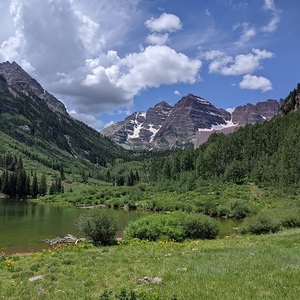

Temperatures in the atmosphere vary greatly depending on what altitude you are at. This is an important concept to mountain climbers, as well as meteorologists. Knowledge of the lapse rate prepares mountain climbers for how much the temperature will change as they gain altitude. For meteorologists, the lapse rate is a key part of diagnosing how stable or unstable the atmosphere is on a given day.
The lapse rate is a measure of the rate of change in temperature with height in the atmosphere. Meteorologists call this the environmental lapse rate. A standard environmental lapse rate is 3.5 degrees F per 1000 feet. This means that for every 1000 feet you climb in the atmosphere, the temperature will fall 3.5 degrees F. It is easy to see why anyone hiking up a mountain would need to take this into account. Let's look at an example of a hiker who is starting a hike at an elevation of 1000 ft and is planning on reaching 5000 feet at the end of the hike. In this scenario let's assume that the temperature at the beginning of the hike is 50 degrees F. Given a standard lapse rate, the temperature would fall nearly 18 degrees by the end of the hike, resulting in an air temperature of 32 degrees F at the highest point.
For meteorologists, knowledge of the lapse rate gives a good proxy for atmospheric stability. In order to gauge instability, one has to look at how rising parcels of air will react as they try to rise through the atmosphere. Think of a parcel of air as a balloon that starts at the ground and then rises upward. When these parcels rise, the air inside them will cool at a specific rate that is independent of the ambient air temperature they encounter around them as they ascend. In order for the parcel to rise, the air inside the parcel has to stay warmer than the air surrounding it. This is because warm air is lighter then cool air (much like helium gas is lighter than air). When the environmental lapse rate is steeper, the atmosphere is said to be unstable. This is because the rising air parcel will continue to be lighter as it ascends, which can result in cloud formation and, at times, precipitation. Conversely, when the environmental lapse rate is weaker, such as 2 degrees F per 1000 ft, a rising air parcel will tend to rise only a short time before it descends back to the ground. On a day like this, the atmosphere is said to be stable.
Lapse rates are important in diagnosing where the atmosphere is going to be most explosive on a given day.
